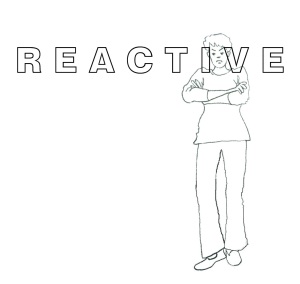Archive
Illumination
 During the autumn months in New England, we coaches have a co-conspirator in Mother Nature. Wielding her paintbrush and bending the angle of the light to move the seasons, She forces us to take new perspectives and directs our attention to marvels un-seeable in the full sun of summer or the winter dark.
During the autumn months in New England, we coaches have a co-conspirator in Mother Nature. Wielding her paintbrush and bending the angle of the light to move the seasons, She forces us to take new perspectives and directs our attention to marvels un-seeable in the full sun of summer or the winter dark.
A visit yesterday to the Trustees of Reservations’ Coolidge Reservation in Manchester, Massachusetts stimulated some reflection for me. With good reason, light is probably our most common metaphor for understanding…enlightenment, illumination, clarity. To see something clearly is to truly understand it. But I think the light during the transition from summer to fall works a more subtle magic. To see something differently is to understand it differently. What looks like a beginning might be an ending, and vice versa.
What practices help you bend the angle of the light to see things differently throughout the year? Particularly when you feel confused or stuck?
The Power of a Systems Perspective
 In Warren Berger’s book, A More Beautiful Question, he recalls an anecdote from education pioneer Deborah Meier that stopped me in my tracks when I read it:
In Warren Berger’s book, A More Beautiful Question, he recalls an anecdote from education pioneer Deborah Meier that stopped me in my tracks when I read it:
“We had one of those world maps with the U.S. right in the middle—remember those? And one of the students looked at it and said, ‘How come the East Indies are in the west?’ And that question got me thinking about the impact of what you put in the center and what it does to everything else.”
I love this story because it so nicely illustrates the value of what my partners and I call “coaching from a systems perspective.” Like a good coach with a provocative question, this little girl created an opening for Meier to talk with her students about their place in a larger system and the perspective they were holding about that. Meier changed the curriculum as a result of this inquiry because “it had so many implications for how you see yourself.”
This is exactly the kind of opening we try to create with leaders who are grappling with the challenges of effecting sustainable change for themselves and their organizations. We find that it is often new insight about the vantage point from which they’re viewing a complex systems environment—and their ability to try on other vantage points—that allows them to break through to new ways of thinking and acting.
One tool we use to get a fix on what our coaching client has put in the center of her awareness, and what that “does to everything else,” is the Butterfly Framework of Complex Human Systems. Like Meier’s world map, this framework allows us to step back and ask, “Where in this landscape of internal and external systemic forces is our client’s awareness focused? What would be possible if she shifted her awareness to another part of the system?”
Having just returned from the SoL Global Forum in Paris, where I had the pleasure of presenting a workshop on the Butterfly Framework, I can report that there is a vibrant international community of coaches and consultants who understand the evolutionary importance of greater systems awareness. Colleagues from no fewer than fifteen countries shared stories with me about how they are catalyzing transformation by helping their clients ask more beautiful questions and better see the systems they are and the systems they’re in.
What question, if you asked it right now, would move you to a new perspective?
Bring Your A Game
The final rounds of last month’s US Open tennis tournament were beset with some of the windiest conditions in the history of the event. From the commentators’ booth, John McEnroe observed, “Every player’s worst nightmare is to play in wind like this. It’s basically impossible to play your ‘A’ game.”
 How do you get up for those moments when you need to bring your ‘A’ game, but conditions (external or internal) are working against you? The wind is howling, your energy is flat, or your fear of failure is creating static that interferes with your performance? Without your ‘A’ game, you can wake up all of a sudden in the car on the way home and the opportunity has passed you by. You might experience this as an indictment of your whole self-worth: I AM SUCH A LOSER! No, let’s not go that far…but it’s true that somehow, in this particular moment, you weren’t able to be who you wanted to be when the stakes were high. You know you can do better.
How do you get up for those moments when you need to bring your ‘A’ game, but conditions (external or internal) are working against you? The wind is howling, your energy is flat, or your fear of failure is creating static that interferes with your performance? Without your ‘A’ game, you can wake up all of a sudden in the car on the way home and the opportunity has passed you by. You might experience this as an indictment of your whole self-worth: I AM SUCH A LOSER! No, let’s not go that far…but it’s true that somehow, in this particular moment, you weren’t able to be who you wanted to be when the stakes were high. You know you can do better.
To improve your chances of rising to the occasion with confidence and clarity when the stakes seem high, start by writing a big ‘A’ on a small piece of paper and keep it in your pocket or your purse in the days leading up to your big event. Use the following questions to bring a clear vision of success into sharp focus so that by the time your event arrives you’re not inventing your success in the moment, but simply following through on the ‘A’ game scenario that you have played out in your mind.
A is for Aspiration: How does this event relate to your biggest vision for success in your life? What do you want to take away from the experience? Reminding yourself why this opportunity means so much to you can energize you by connecting you to a sense of purpose. When you know what you want to get out of it, you can appropriately scale and shape the positive energy you want to put into it.
A is for Awareness: Big moments can expand in our awareness until they engulf us, making us feel small by comparison. One way to respond to this is to move your awareness outside yourself and take in the bigger picture. What’s at stake for the other people in the moment? Is it a big moment for them? How do you want to invite them to participate? What are you co-creating energetically together? What happens to your energy when you see this as a collective experience instead of one that depends entirely upon you?
A is for Attitude: There’s a reason why this feels so big. You can think about it as the degree of difficulty. When a diver walks up to the end of the diving board and executes a simple swan dive, there probably isn’t a lot of challenge attached to it. But try doing a pike with 2.5 somersaults and 2.5 twists from a 10 meter platform, and you’re due to earn some serious points if you nail it. So, first of all, give yourself a preliminary pat on the back for even trying something this big. Go you! And second, recognize how much impact your attitude has on your results. What does it feel like to dread this event? What does it feel like to anticipate it with eagerness and curiosity? What attitude will serve you best in bringing and executing on your ‘A’ game? That’s the one. Be that.
Leadership In Focus
 Click…then focus? Seems backward, but that’s exactly what you’ll be able to do with the new camera that photography innovator Lytro will start shipping in early 2012.
Click…then focus? Seems backward, but that’s exactly what you’ll be able to do with the new camera that photography innovator Lytro will start shipping in early 2012.
The camera works by capturing a chunk of the light field, which Lytro defines as, “the amount of light traveling in every direction through every point in space.” It is a technology that allows you to snap first, and afterwards decide where within the field you want to focus the viewer’s attention. As you amuse yourself by clicking around in the demo gallery on Lytro’s website, think about how important the act of focusing is to your effectiveness as a learner and a leader.
Where do you choose to focus as you travel through the complex field of information coming at you from every direction and from every point in space? Do you try to multitask in an effort to be more productive? In The Power of Full Engagement, Jim Loehr and Tony Schwartz warn that multitasking results in divided attention, lower quality of work, and a shallowness of connection to others.
Or, alternatively, do you comfort yourself by adhering mainly to one level of focus or another? In a recent HBR article entitled Managing Yourself: Zoom In, Zoom Out, Rosabeth Moss Kanter observed, “The lens through which leaders view the world can help or hinder their ability to make good strategic decisions, especially during crises. Zoom in, and get a close look at select details—perhaps too close to make sense of them. Zoom out, and see the big picture—but perhaps miss some subtleties and nuances.”
In the last several weeks, I’ve had the good fortune to spend some time deepening my facility with two different but complementary systems-based coaching frameworks—Coaching from a Systems Perspective and Leadership Agility—that help people build their capacity for shifting focus with clarity and purpose. I will write more about each of them in the future; but for starters, I’ll leave you with a useful question:
How does what you’re focusing on right now support your greater purpose?
Don’t Fence Me In
 There was no shortage of guffaws and looks of incredulity when presidential candidate Ron Paul absurdly suggested during a recent debate that a border fence with Mexico might well be used—in some grimly imagined future police state—as much to “keep us in” as to keep “all those bad people” out. But isn’t there just a tiny grain of truth in that? No, I don’t mean that we physically would be constrained from leaving the country. But, doesn’t a fence of any kind “keep us in”?
There was no shortage of guffaws and looks of incredulity when presidential candidate Ron Paul absurdly suggested during a recent debate that a border fence with Mexico might well be used—in some grimly imagined future police state—as much to “keep us in” as to keep “all those bad people” out. But isn’t there just a tiny grain of truth in that? No, I don’t mean that we physically would be constrained from leaving the country. But, doesn’t a fence of any kind “keep us in”?
That is, after all, exactly one-half the point of a fence. It delineates what’s us and what’s them, what’s mine and what’s yours, what’s here and what’s there. And once we’ve gone to the trouble of defining space like that, at least part of our awareness shifts to preserving our “in-ness.”
And I’m not just talking about politics. We build fences around ourselves all the time, at home and at work, in our communities, and across the globe. Maybe it’s wise to pause and listen to the speaker in Robert Frost’s Mending Wall who considers tweaking his tradition-bound neighbor:
“Before I built a wall I’d ask to know
What I was walling in or walling out,
And to whom I was like to give offence.”
Can you think of a fence you’ve made in your life to keep others out? What’s it like inside the fence?
Looking At, Looking Through
 I’ve always loved this photo, taken by my friend Nancy Daugherty in Bermuda, because it reminds me to be respectful of multiple realities.
I’ve always loved this photo, taken by my friend Nancy Daugherty in Bermuda, because it reminds me to be respectful of multiple realities.
Can’t you just imagine a team leader confidently describing what she’s looking at—say, for example, some trees and a house on a bluff—while the rest of the group have puzzled looks on their faces. They’re wondering how in the world she sees trees and houses in these beautiful abstractions they’re looking at. It’s only after they realize that they are all looking through different windows that the team can have an intelligent conversation about what they are seeing together.
The first step in moving toward a shared vision, whether at work or with family and friends, is to recognize that we each experience reality through our own window, and that there are as many windows as there are people in the world.
In The Dance of Change, Peter Senge and his co-authors recount how Harley-Davidson CEO, Jeff Bleustein could tell that the change initiative the company had undertaken was beginning to make a difference: “The most tangible change I observed in the first few years after the organizational learning work began at Harley was at meetings,” Bleustein observed. “People stopped saying, ‘This is the way it is,’ and started saying, ‘This is the way I see it.’”
An important breakthrough. But of course, the work of building a shared vision doesn’t end with acknowledging the existence of multiple viewpoints. The harder work lies in developing the capacity—even the courage—to try out different windows, and commit to the one(s) best-suited to moving the vision forward together.
Robert Kegan and Lisa Lahey, the authors of Immunity to Change, describe the capacity to relinquish our attachment to our own window in terms of mental complexity. “If one is not to be forever captive of one’s own theory, system, script, framework, or ideology, one needs to develop an even more complex way of knowing that permits one to look at, rather than choicelessly through, one’s own framework.”
So, the challenge for the team leader is to encourage everyone else to let go of their frameworks and come over to her window, right? No! Why should her window be sacrosanct? If she’s really after team success, her job is to facilitate a conversation in which the whole team can step back, agree on what they want to create, and take a bold look at how each of their windows obscure, distort, or magnify the view.
What do you know about the window that you’re most comfortable looking through?
Shape Change
 In working on various writing and editing assignments over the years, I’ve made extensive use of the “Track Changes” feature in Microsoft Word. And I occasionally find myself smiling with amusement when selecting the menu option “Accept Change.” If only it were that easy!
In working on various writing and editing assignments over the years, I’ve made extensive use of the “Track Changes” feature in Microsoft Word. And I occasionally find myself smiling with amusement when selecting the menu option “Accept Change.” If only it were that easy!
From big changes, like sending a child off to college, to little ones, like adapting to a new mobile phone, all of us experience resistance to change at one point or another. Most challenging are the changes that we perceive as coming from outside ourselves—changes done to us, rather than initiated by us.
At work and in our personal lives it’s so easy to surrender to the idea that we don’t have a choice in change. But, I tend to agree with Maya Angelou, who suggests that we always have the power to choose something when she says, “If you don’t like something, change it. If you can’t change it, change your attitude.”
In a recent conversation, a client and I made an entertaining discovery about the word “reactive” that inspired me to develop this little animation about my orientation to change. It’s less than a minute long. I hope it gives you a smile.
Looking Right at It
 Do you have a chaotic utensil drawer in your kitchen?
Do you have a chaotic utensil drawer in your kitchen?
Where a potato masher and a garlic press live in jumbled harmony with old chopsticks and egg dye dippers and a weird little plastic thing that someone invented to peel oranges with?
I have one of those drawers. And on more than one occasion it has offered me an enlightening experience. I slide the drawer out knowing exactly what I’m looking for; a carrot peeler, say. I observe that it isn’t right on top, so I start raking through the utensils, my irritation growing in exact proportion to my certainty that the peeler was in here the last time I looked.
I abandon the drawer and search other possible locations: The dishwasher, the draining rack, the container next to the stove, the regular silverware drawer. Still thwarted, I return to the utensil drawer and the peeler is right there in plain sight. What happened?
As I searched, my picture of the peeler changed. I opened my expectations to include not just a perfect picture of a peeler—as one might see it displayed in the gadget aisle at the grocery store—but a peeler seen from oblique angles; butt-end first or upside down with the blade completely hidden.
Sometimes, when you change your expectations, you discover that what you were looking for was right under your nose the whole time. What are you searching for these days?
The View from Here
 When you go around with eerie music and spooky sound effects in your head, everything you see looks like a horror flick.
When you go around with eerie music and spooky sound effects in your head, everything you see looks like a horror flick.
Remember the classic recut trailers that turned Mary Poppins into a predator and The Shining into a lighthearted family film?
Beyond spotlighting the editing skills of their creators, these little pieces beautifully illuminate the power of perspective. Filmmakers are always making choices designed to shift our perspective. They take us to a viewpoint. And it’s our viewpoint that determines what we actually see.
So, as the director of your own life story, you have some choices to make. Are you starring in a thriller? A romantic comedy? An action adventure? What soundtrack have you chosen? What happens when you change the audio?